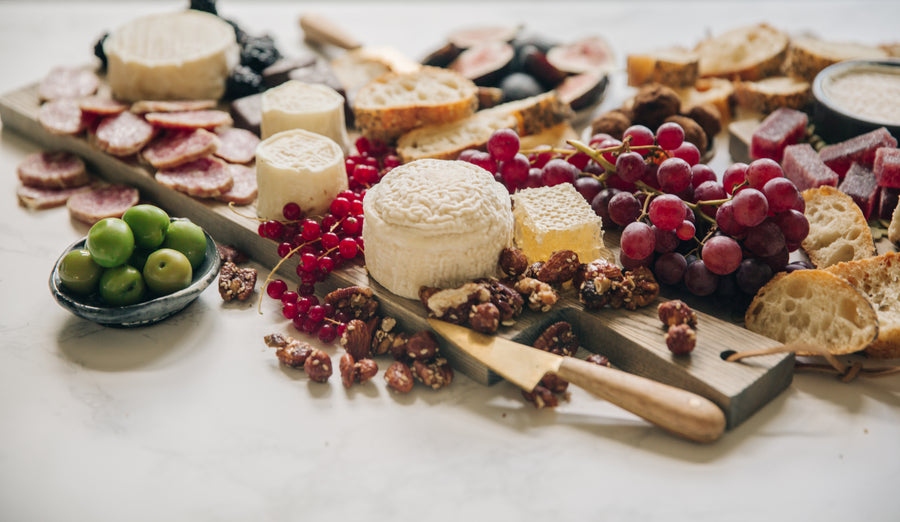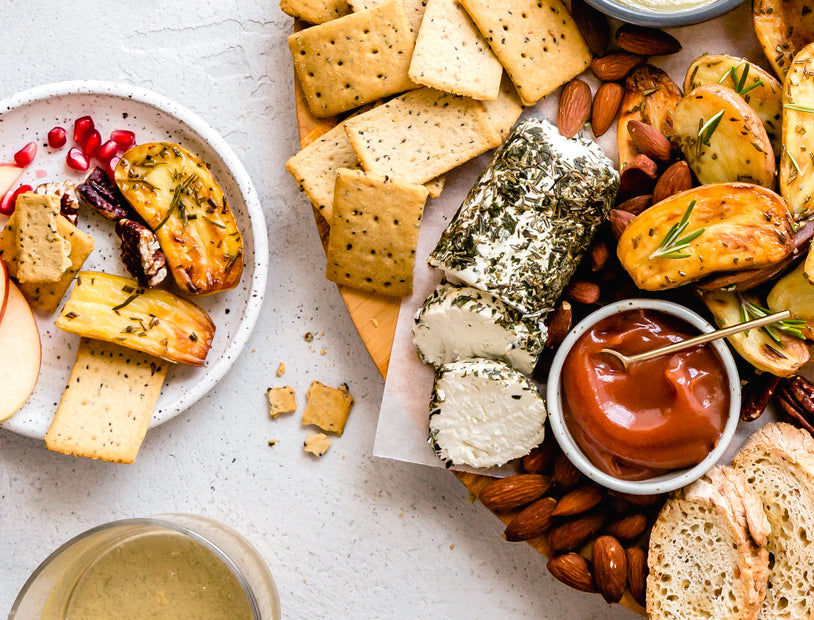We worked with our Cultured Butter Queen on the West Coast, Alexis Dunlap of Hot Jamn Preserves, to bring you a guide to brown butter.
Brown Butter Basics—
Browning butter is the process of slow-simmering (basically reducing) melted butter, evaporating the butter’s water content, and toasting the milk solids to a deep brown color. Browned butter will have a roasty-toasty flavor and aroma to it, with a nuttiness and richness that’s undeniable, both in texture and taste. Using cultured butter takes it even to another level, as its cultures add yet another layer of creaminess and flavor. Vermont Creamery unsalted cultured butter will always be best here.
Suggestions—
Because I love to bake and go through such a large quantity of brown butter daily, I prefer to brown my butter in bulk so it is already prepared and room temperature when I need it for a recipe. I can then also measure out the exact quantity I need as I need it. Brown your butter ahead of time and skip the timely browning and cooling steps when you’re inspired to bake and want to get right down to it!
Time and yield—
Both will vary based on the amount of butter you’re browning. If browning a greater amount (6+ sticks), browning could take 12-15 minutes. A smaller amount (4 or less sticks), the browning will happen quicker, under 10 minutes.
Because the water evaporates, you will lose a few grams during the browning process, about one tablespoon of water lost per stick of butter. This is why it’s difficult to interchange brown butter for regular room temperature butter when it is required in a recipe, or vice versa. The change in water content can affect the final texture of the bake. However, due to the fact that our cultured butter has a higher butterfat percentage, the yield will be a bit higher than typical sweet cream butters.
Materials—

- Vermont Creamery Unsalted Cultured Butter; room temp and cut into large pats*
- Heavy bottomed, light color pan or dutch oven**
- Heat safe spatula
- Heat safe container or jar
*I recommend cutting room temp butter into large pats instead of using whole sticks, since as butter melts, the milk solids will immediately begin the process of toasting. This can create uneven browned butter, with some burnt bits and some not as toasted. Low and slow all the way!
**A light color pan or dutch oven is recommended so you can keep a careful eye on the quickly changing color of the butter solids. They will take a while to begin toasting, but as soon as they do, they can turn from a caramelized brown color to burnt very quickly.

How-to—
Step 1: Place all large room temperature butter pats into your pan or dutch oven on low to medium heat until all have melted. Bring to medium heat where the butter is at a high simmer and continue to constantly stir as it cooks, detaching any sticky milk solids from the bottom of the pan. These can burn easily if left stuck to the pan, so constant stirring is truly essential!
Step 2: Continue stirring for approx. 10-12 minutes, and you will begin to see the once-white milk solids turn a golden brown color.

The darkness of the browning is all about preference, I prefer a deeply toasted, nearly burnt brown butter, where my heat is turned off just before the solids become too dark/black. If you prefer a lighter caramelization, cook less time! You can also turn off the heat when it nears browning, as the residual heat in the pan will continue to slightly brown the butter. An under-browned butter is always better than an over-browned butter, since the latter can’t be saved and the former can always be put back on the heat to continue cooking!
Step 3: Butter will become very bubbly, and a lower steadier heat will help calm it down. You always want to be able to see the color of the butter under the bubbles, so you don’t take it too far.
Step 4: Once you’ve reached the shade of brown you’re happy with, anywhere from tan to very dark brown, remove from the heat and allow to cool a few minutes before transferring to a heat-safe container. Transferring immediately can cause the butter to bubble over, and it is VERY hot and can be very messy. Allow to cool slightly before doing this.
Step 5: Allow butter to come to room temperature before using in a recipe. Store in the fridge for up to two weeks, or freeze for about 3 months.
Full Recipe Linked Here
Best Recipes with Brown Butter—

Brown Butter Choc Chip Cookies
A classic chocolate chip cookie recipe improved upon with our cultured butter and crème fraîche .
Brown Butter Pecan Pie Brownies
Super chewy and chocolaty brown butter brownies are topped off with sticky, gooey pecan pie topping.

Brown Butter Tomato Tartine
The key to this tomato tartine is to use the best butter and heirloom tomatoes you can find.

Brown Butter Stuffing
The classic stuffing recipe you know and love, packed with flavor from herbs and aromatics. Topped with a crumble of fresh goat cheese for an added layer of brightness.

Brown Butter Ice Cream
Browning the butter makes the ice cream base particularly fragrant and flavorful.
Looking for more simple ways to use brown butter?
So you just whipped up a fresh batch of delicious brown butter and you can't wait another second to try it... we've got you covered with some simple ideas too!
- Spread it on toast for an extra layer of nuttiness
- Put a spoonful on cooked steak or fish to add another level of rich flavor
- Drizzle it over popcorn
- Mix it with pasta for a simple 2-ingredient meal
- Use it to roast veggies, or pour over steamed ones
- Toast breadcrumbs
- Fry or scramble eggs in it
The list goes on and on. Tag us @vermontcreamery on Instagram to show us your favorite ways to use Brown Butter!





